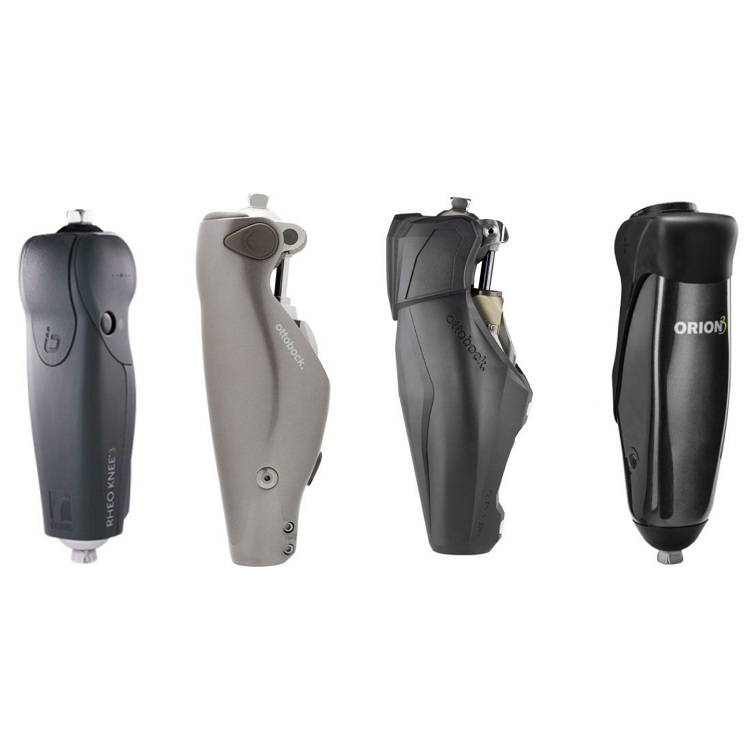On Bionics for Everyone’s table of prices for microprocessor knees (MPKs), the most affordable device listed is Ottobock’s Kenovo at $25,000 to $35,000. Ottobock’s C-Leg costs between $40K and $50K, and its highest-end device (the Genium X3) carries a six-figure price tag. Comparable models from Ossur, Blatchford, Freedom, and other global manufacturers all fall within the same range.
Presumably, then, a knee that can be built for just a few hundred bucks must be vastly inferior in terms of function and performance. But a young engineer at the University of Texas-El Paso is trying to put the lie to that hypothesis. In a paper published in the new edition of the peer-reviewed journal Prosthesis, Lucas Galey offers proof of the concept that “a prototype microprocessor knee can be manufactured at less than $1,000 with comparable stability and user experience to a standard high-end device.”
A Ph.D. candidate at UTEP, Galey has been working on the experimental MPK since his undergraduate days. The project is an outgrowth of Galey’s volunteer involvement with LIMBS International, a global nonprofit that provides prosthetic legs to amputees in nearly 50 developing nations. LIMBS has been perfecting low-cost passive knees for two decades, using a patented design that compares favorably with the most widely available alternatives in the developing world. (You can’t get a LIMBS passive knee in the United States, as it doesn’t meet federal standards for healthcare technology, although the organization claims to be working on a commercially viable model.)
Galey’s low-cost smart-knee, dubbed the E-Knee, builds on LIMBS’ basic passive-knee template, smartening it up with clamping mechanisms, magnetic sensors, damper, an Arduino microprocessor, and eight AA batteries’ worth of power. Total cost of all components: $507.23. With these enhancements, Galey writes in Prosthesis, the E-Knee offers the same basic advantages as a name-brand MPK—real-time gait monitoring, variable gait adjustment, and fall prevention—for pennies on the dollar.
To reiterate: This is just a proof-of-concept device, not a product that’s going to be commercially available any time soon. But we think any evidence that helps establish the viability of affordable prosthetics is cause for celebration. If it can be done in a lab, somebody will figure out how to do it in a factory.
Galey compared his lab-built prototype against a pair of control knees: a passive LIMBS knee and a high-end microprocessor knee. Two test subjects (ages 62 and 70) who use MPKs in their daily life wore the E-Knee and both control devices during a series of walking tests, during which the authors measured their walking speed, gait symmetry, balance, fall exposure, and other metrics. They also collected qualitative data via a questionnaire that asked the subjects to evaluate each device on 16 criteria, including comfort, stability, ease of use, and confidence.
On the quantitative measurements, the E-Knee’s performance more closely matched that of the control MPK knee than the passive knee. Galey’s evaluation is based heavily on ground reaction force (GRF), a metric commonly used to evaluate gait symmetry and limb stability. Based on that data, the E-Knee offered about 30 percent improvement over the passive knee. On another key marker—the ratio of time spent on the intact limb versus time spent on the prosthesis during each gait cycle—the E-Knee showed almost no difference from the control MPK.
Qualitatively, one of the subjects rated the E-Knee equal to or better than the control MPK on all 16 criteria. The other subject, though less enamored of the E-Knee, still placed it on par with the control MPK in terms of safety and stability.
“The results of this study support the hypothesis that a prototype microprocessor knee can be manufactured at less than $1,000 with comparable stability and user experience to a standard high-end device,” Galey’s paper concludes. Whether or not this particular device ever reaches the marketplace, we applaud the hypothesis—and we’ll be looking for more evidence in support of it.
